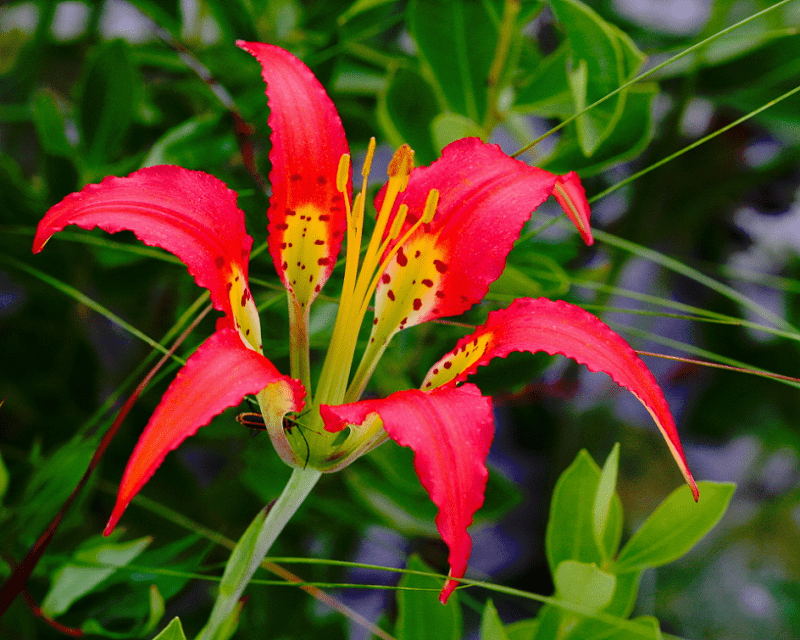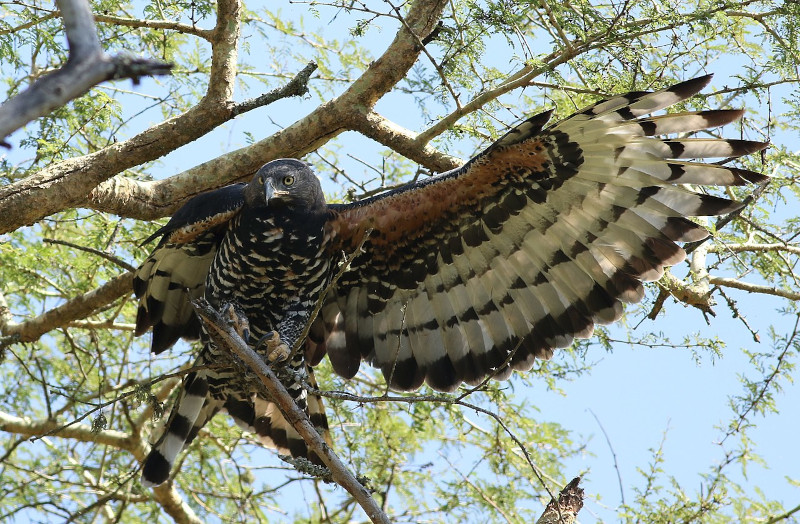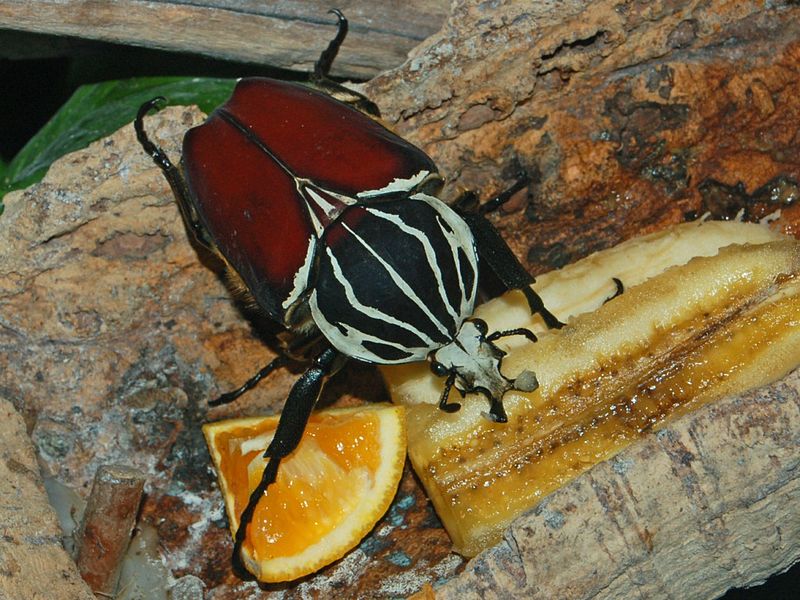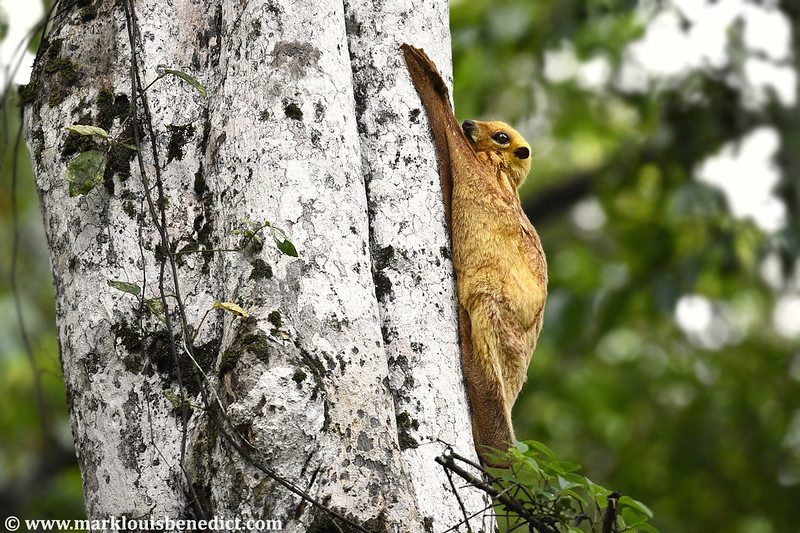
Black Bat Flower Facts
- First of all, the Black Bat Flower, also known as the Tacca chantrieri, represents a truly unique species of flowering plant. Believe it or not, it also forms a member of the yam family. However, though not considered toxic, it is not considered edible, either.
- This astounding form of life constitutes a most unusual species due to one specific reason. That’s the fact the fascinating flowers develop as black in color. This astounding characteristic ranks it as one of the few known flowers of which this holds true.
- Further, many people consider the impressive blooms it develops to have a somewhat bat-like shape. This therefore serves as the source of the common name. Though black remains the predominant color, the flower also occasionally develops in white or brown.
- Finally, while the Black Bat Flower does not presently hold an official listing with the IUCN, most experts currently consider the species to be endangered. While it faces other dangers, climate change represents its greatest threat, due to its need for a highly specific type of habitat.
Related Articles




Black Bat Flower Physical Description
Firstly, regardless of its unusual appearance, the awesome Black Bat Flower typically does not stand out to the eye when not blooming. That holds true due to the fact that it remains an average-sized plant. This surprising beauty attains a height of roughly 36 in (91 cm).
The amazing species also often develops numerous delicate-seeming tendrils that spread out from it. These features sometimes reach as much as 28 in (71 cm) in length. These give the plant a fascinating addition to its already distinctive look.
However, the most impressive part of the plant remains its unique bloom. This incredible flower often reaches a width of as much as 12 in (30 cm). Meanwhile, the modified leaves reach lengths of as much as 28 in (71 cm) in length.
Furthermore, the wide bloom consists of 2 large dark brackets. Not only that, but the long modified leaves fork at the ends. The dark brackets look like wings, and the leaves resemble the whiskers of a bat, hence the name.
Finally, the other leaves of the Black Bat Flower develop a marvelous bright green color. These same leaves also have a very smooth texture. In addition, the species produces an underground bulb used to store nutrients for a future need.
- Kingdom: Plantae
- Phylum: Angiosperms
- Class: Monocots
- Order: Dioscoreales
- Family: Dioscoreaceae
- Genus: Tacca
- Species: T. chantrieri
Black Bat Flower Distribution, Habitat, and Ecology
It bears mentioning that the remarkable Black Bat Flower developed as endemic to a comparatively wide range. This includes specific regions of Australia, Africa, and Southeast Asia, including Thailand and parts of China.
Sadly, however, all 10 known varieties of this plant have become extremely rare in the wild. Furthermore, efforts to cultivate the plant rarely succeed. Although researchers continue to make the attempt, the reason for this failure eludes them.
But this unique flower requires very specific habitat types to flourish. Its primary natural habitat consists of areas of tropical jungle. This astounding perennial also requires high levels of humidity, shade, and well-drained soil in order to truly thrive.
In conclusion, to add to its impressiveness, the various varieties of Black Bat Flower also bloom at different times. These times range from late Spring to early Fall. The genus blooms repeatedly, however, often as much as 8 times in a single season.
Species Sharing Its Range



Check out our other articles on Sensational Spiders Around the World, Long Eared Owl, Lake Natron, Icicle Mushroom, Marbled Cat, Picasso Bug, Mountain Chicken, Giant Oarfish, Black Mamba










How can the rhizome be prepared to make a tea?
Hello Carolyn,
An intriguing question. Though the tubers can be fermented to make alcohol, we are not aware of the rhizome being used for tea. If you find a way to do it, please let us known!
Sincerely,
OBP
I have recently done some research into why certain plants seem so picky about where they grow. Plants apparently have the ability to sense chemical “messages” provided by other plants which encourage them to grow and bloom. I am wondering about the mix of plants that successful Bat Flower breeders have in their homes? A mix of other tropical plants? I would want to try growing some simply because they are endangered.
Can these be grown in pots successfully?
Can you give me an idea of the cost of one of these plants?
Hello Jackie,
Thank you for your question. They can be challenging to grow, but it can be done. As to the cost, that varies significantly. Here is a good source of information.
https://www.thespruce.com/bat-flower-plant-profile-4842137
Good luck!
OBP
My black bat plant is very large. I wish to split it but don’t know when or how to do it. Can you please let me know how to go about it?
Hello Susan,
Thank you for your question. The best approach for that is the following:
Divide and separate the rhizomes in Autumn after flowering. Divide the rhizomes into clumps, using a sharp knife. Replant the rhizomes, spacing them three to four feet apart.
We hope that helps!
OBP
I have had great success with dividing my plant and have managed to share the love with family and friends. My original plant has now got a lot of smaller plants coming up from it so will be able to divide again. Thank you for your information.
Hello Susan,
Outstanding! So glad to hear of your success. You are quite welcome.
Sincerely,
OBP